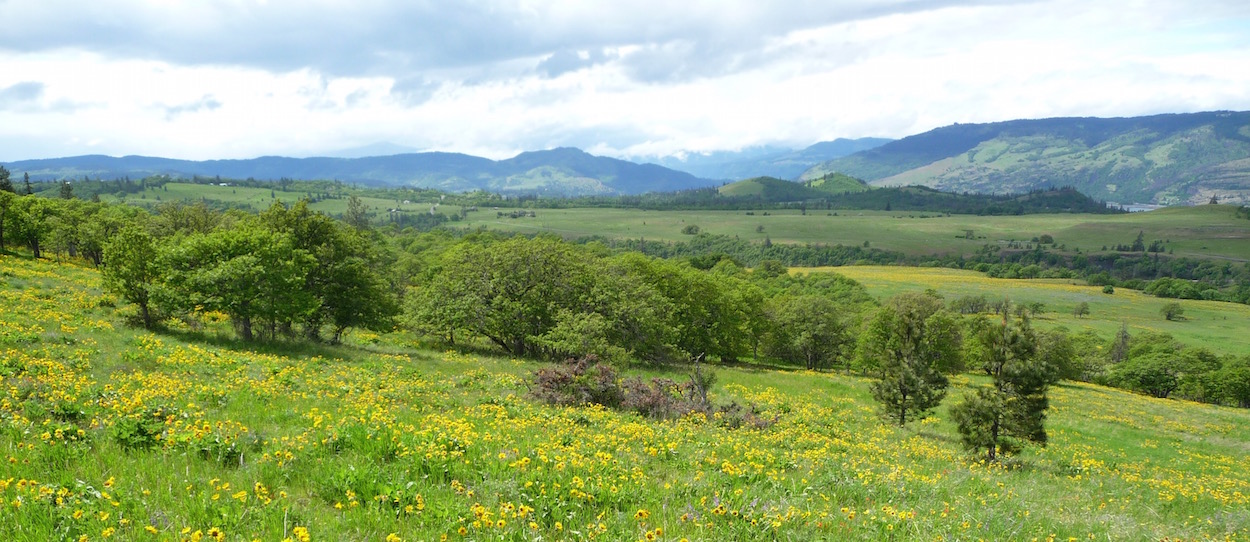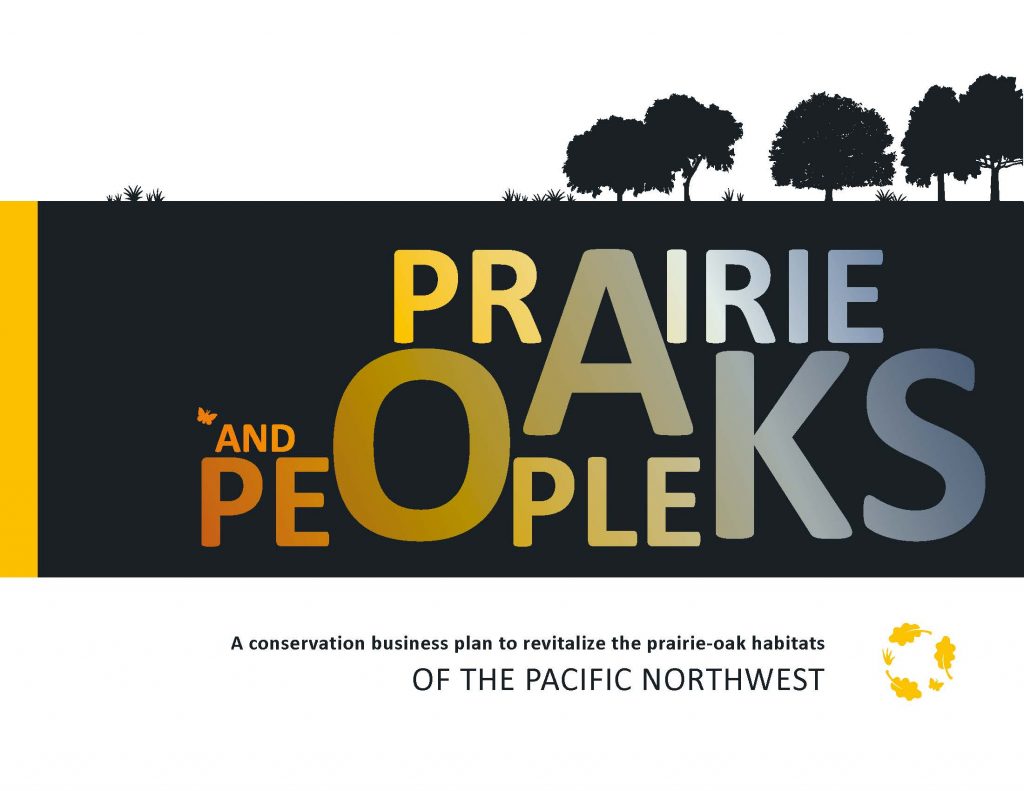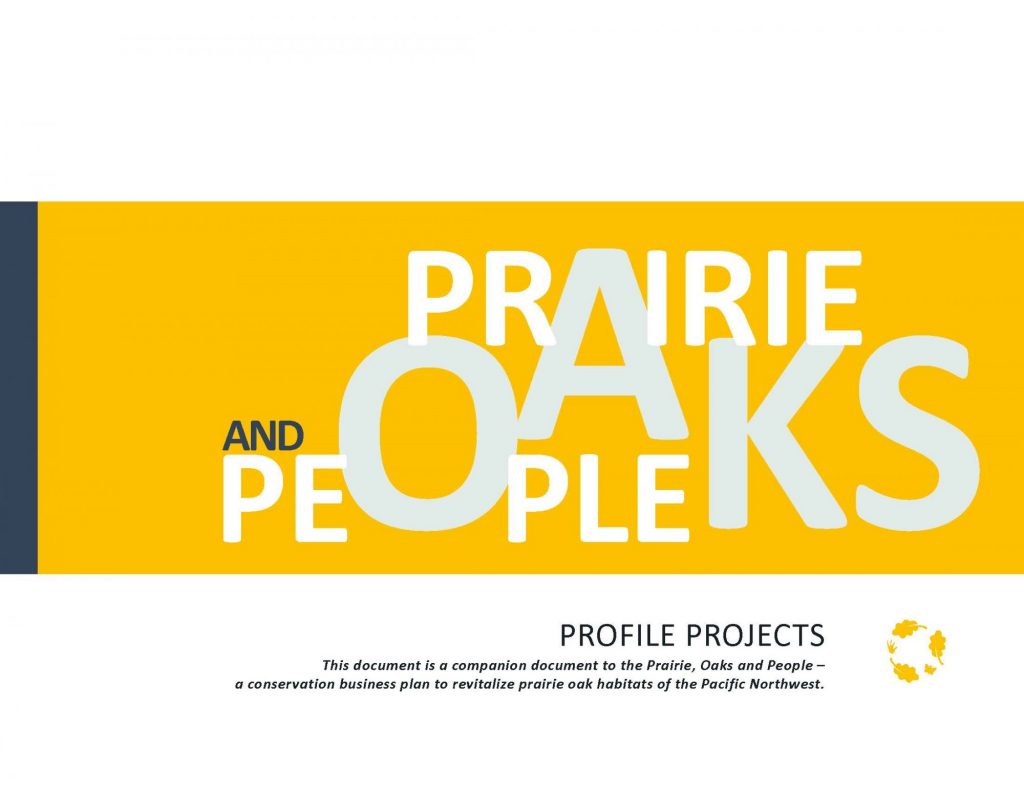A broad coalition of partners just unveiled a new conservation strategy to help conserve oak woodlands and native prairies from northern California to British Columbia. Prairie, Oaks and People - A Conservation Business Plan to Revitalize the Prairie-Oak Habitats of the Pacific Northwest outlines the case for long-term investments that will restore a signature feature of the region’s historic landscape. “Native prairie-oak species are at a crossroads,” the groups say in the plan’s introduction. “Populations are declining, ranges are contracting, and many species are gone from parts of their historic range. Our goal is to save the most imperiled, and keep the rest from becoming imperiled.”
The plan is the product of more than a year’s work by partners of the Cascadia Prairie-Oak Partnership, American Bird Conservancy, Center for Natural Lands Management, Klamath Bird Observatory, Willamette Partnership, and Pacific Birds Habitat Joint Venture. A companion document, Prairie, Oaks and People - Profile Projects, showcases 21 projects that support the goal and objectives outlined in the business plan. Profile Projects is intended to be a dynamic compilation of projects that partners can contribute to over time.
In most cases, the declines in prairie and oak species are directly related to long-term habitat loss. The region’s prairie habitats have been converted to agriculture and other development, and the losses of oak woodlands have accelerated in recent years due to invasion of conifers formerly controlled by periodic fires. The window of opportunity to rescue oaks being replaced by conifers is rapidly closing in many areas.
“Few natural landscapes hold more intrinsic cultural appeal for people than prairie-oak habitats,” according to the plan’s authors. “Reconnecting people to this part of their natural heritage is critical to building public support for prairie-oak conservation.”
Building on recovery plans developed for species already on the endangered species list, and on habitat objectives designed to sustain regional bird populations, the plan calls for investment of more than $83 million over the next 10 to 15 years. The intent is to shore up vulnerable species and maintain habitats for a wide variety of wildlife in the context of both human needs and a changing climate. Some of the species of conservation concern that will benefit are: Taylor's checkerspot butterfly, Oregon vesper sparrow, Lewis's woodpecker, Kincaid's lupine, and western pond turtle.

People have a special connection with oak and prairie habitats and it is no coincidence that most of the Pacific Northwest’s current population centers are found in historic prairie-oak areas. Fortunately, people and prairie-oak habitats can co-exist. “Many prairie-oak species can persist on landscapes that support livestock grazing, commercial forestry, hunting, and other relatively low-intensity human uses,” the plan notes. “Landowner assistance and incentives to maintain these habitats and their traditional cultural values can reduce the need for costly land protection and restoration measures.”
The new plan builds upon prairie-oak conservation already underway across the region. Local partnerships, well-established or emerging, include:
The Cascadia Prairie-Oak Partnership is an umbrella group of over 600 prairie-oak conservation practitioners from the Willamette Valley-Puget Trough-Georgia Basin Ecoregion that is led by the Center for Natural Lands Management’s South Sound Prairies program.
In the Portland metropolitan area, the Intertwine Alliance’s Oak Prairie Working Group is wrapping up an ambitious oak mapping program and developing a strategic action plan to guide future conservation efforts.
In the Willamette Valley, 18 organizations and agencies–many of them with a long history of prairie-oak habitat conservation–have joined together in a new Willamette Valley Oak-Prairie Cooperative led by the Greenbelt Land Trust.
A new East Cascades Oaks Partnership, coordinated by the Columbia Land Trust, is bringing together public agencies, conservation organizations and private landowners from four counties in Oregon and Washington.
The Klamath-Siskiyou Oak Network has won national recognition for its partners’ success in restoring more than 3,000 acres of oak woodlands in southern Oregon and neighboring Siskiyou County in California.
The Northwest California Oak Network, coordinated by the Northcoast Regional Land Trust, brings together a diverse group of organizations, agencies, and landowners working to restore oak woodlands in Humboldt, Mendocino, and Trinity counties.
Note: The Cascadia Prairie-Oak Partnership 2018 Conference will have a welcome symposium centered around this new strategy.
Elspeth Hilton Kim, Center for Natural Lands Management
Photos
Taylor's checkerspot–Ted Thomas, U. S. Fish and Wildlife Service
Oak and prairie landscape–Bruce Taylor, Pacific Birds Habitat Joint Venture


